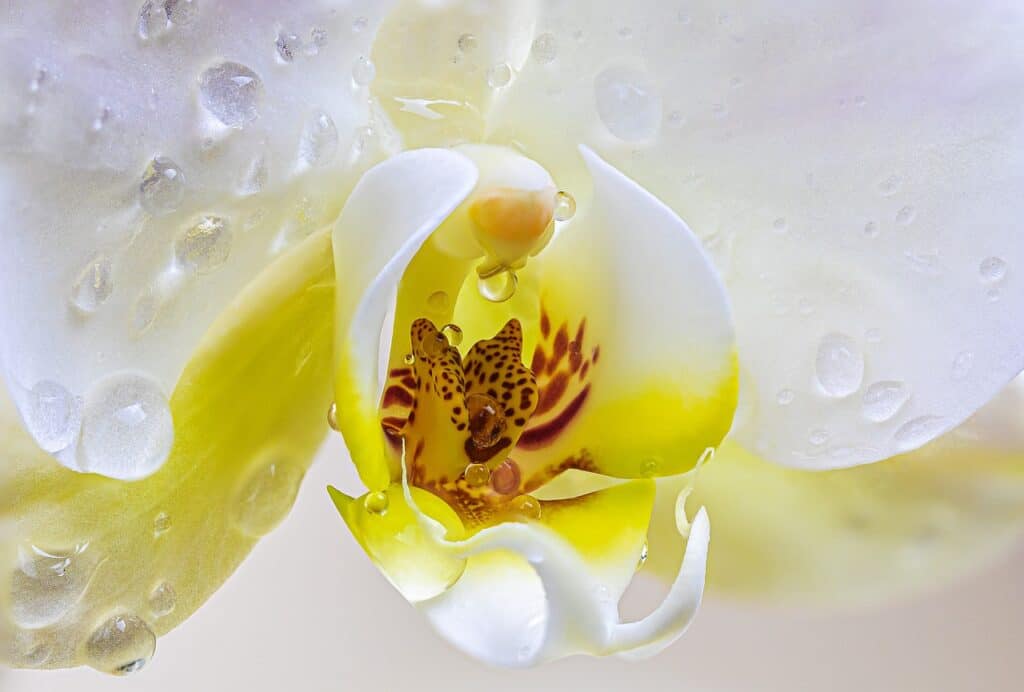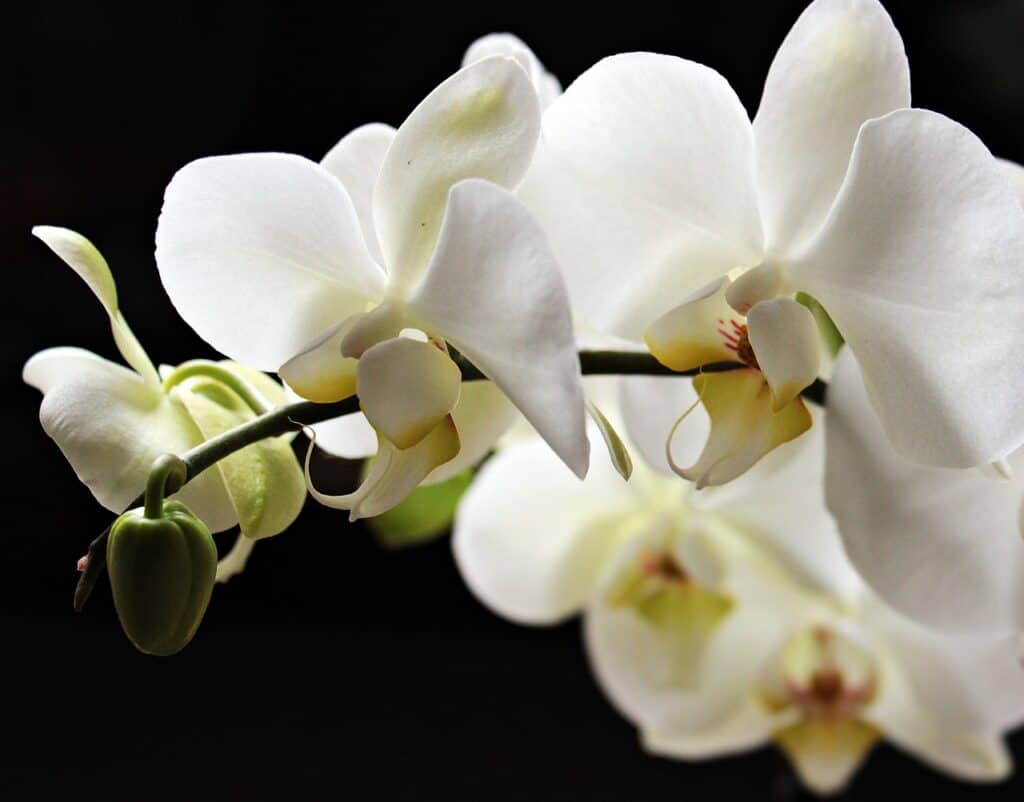Orchids are renowned for their stunning beauty and unique growing requirements. Traditionally, they are cultivated in well-draining potting mixtures and require a balance of air, water, and light. However, there’s a growing trend in orchid cultivation – growing orchids in water. Water culture is an intriguing and low-maintenance method that has gained popularity among orchid enthusiasts. In this article, we will explore the ins and outs of orchid growing in water, providing you with tips for successful water culture.
How do you keep orchids alive in water?
Growing orchids in water, known as water culture or hydroponics, can be an intriguing and low-maintenance method. To do this, choose orchid varieties that adapt well to water culture, like Phalaenopsis. Select a clear, well-draining container that partially submerges the roots while keeping leaves and pseudobulbs above water. Use purified water, such as distilled or purified water, to prevent mineral buildup. Maintain a consistent water level, so the roots are neither too dry nor submerged. Place your orchid in an area with bright, indirect light, like near a window with filtered sunlight. Apply a diluted orchid-specific fertilizer about once a month during the growing season.
Regularly remove the orchid to rinse its roots under purified water to remove impurities. Check the roots for signs of rot or damage, trimming affected roots when needed. Remember that orchids may take time to adapt to water culture, so be patient and willing to experiment to meet their specific needs. Maintain higher humidity using methods like humidity trays or room humidifiers. By following these steps, you can enjoy the unique experience of growing orchids in water while keeping your plants healthy and thriving.

Understanding Water Culture for Orchids
Water culture, also known as hydroponics or semi-hydroponics, is a method of growing orchids without traditional potting media. Instead, the orchid’s roots are submerged or partially submerged in water or a hydroponic nutrient solution. While it may seem unconventional, this approach has its merits, and it’s relatively easy to set up.
Choosing the Right Orchids for Water Culture
Before diving into water culture, it’s important to select orchid species that are more adaptable to this growing method. Some orchids naturally thrive in water culture, while others may struggle. Phalaenopsis orchids are among the most common choices for water culture due to their adaptability and popularity.
Can you grow an orchid in just water?
- Select the Appropriate Container: When transitioning your orchid to water culture, choose a container that allows for good air circulation and light penetration. Glass or clear plastic containers work well. Ensure that the container is tall enough to support the orchid and that it can hold enough water to submerge the roots.
- Use the Right Water: Orchids in water culture should be placed in distilled or purified water, as tap water may contain minerals and chemicals that can harm the plant. Rainwater can also be a suitable option. Change the water every 7-10 days to prevent stagnation.
- Maintain Water Level: The roots should be partially submerged in water, allowing them to absorb moisture and nutrients. Keep the water level consistent to ensure the roots don’t dry out or rot. Monitor the water level regularly.
- Provide Adequate Lighting: Orchids still need light to thrive, even in water culture. Place your orchid in a location where it can receive bright, indirect light. A windowsill with filtered sunlight is ideal.
- Regularly Rinse Roots: Every few weeks, gently remove the orchid from its container and rinse the roots to remove any accumulated salts or impurities. This helps maintain healthy root function.
- Fertilize Sparingly: Orchids in water culture need nutrients, but you should use a diluted orchid-specific fertilizer to prevent overfeeding. Fertilize your orchid about once a month during the growing season, reducing frequency during the dormant phase.
- Monitor for Root Health: Keep a close eye on the roots for signs of rot or fungal growth. If you notice any issues, trim away affected roots to prevent further damage.
- Transitioning from Soil: If you are transitioning an orchid from soil to water culture, it may take some time for the roots to adjust. Be patient and monitor the orchid’s progress closely.
- Experiment and Adjust: Water culture can be a bit of a trial-and-error process. Orchids may respond differently to this method, so be willing to experiment and make adjustments as needed based on your orchid’s specific requirements.
- Maintain Humidity: In water culture, the ambient humidity should be relatively high. Consider using humidity trays or room humidifiers to provide a suitable environment for your orchid.

Is it bad for orchids to sit in water?
- Less frequent repotting: Orchids in water culture generally require less repotting because there’s no need to replace the potting medium.
- Easier monitoring: Water culture allows for easier inspection of root health, making it simpler to identify and address issues.
- Reduced risk of overwatering: Orchids are less likely to suffer from overwatering in this method, as they take up water as needed.
- Lower maintenance: Water culture can be lower maintenance compared to traditional potting mixes, making it an attractive option for orchid enthusiasts with busy schedules.
While water culture can be a successful way to grow orchids, it may not be suitable for all species. It’s essential to remember that orchids are adaptable, and their preferences can vary. Be prepared for some experimentation to determine if water culture is the right approach for your specific orchid and growing conditions.
Propagate Orchid In Water
- Select a Healthy Orchid: Start by choosing a mature and healthy orchid plant. Healthy leaves and roots are a good indication that the orchid is suitable for propagation.
- Gather Your Supplies: You’ll need a clean pair of scissors or pruning shears, a container, and some rooting hormone (optional).
- Prepare the Container: Select a clear container and fill it with distilled or purified water. This container will be the new home for your propagating orchid.
- Choose the Right Stem or Pseudobulb: Identify a suitable stem or pseudobulb for propagation. Look for a mature one with nodes, as these are where new growth and roots will develop.
- Cut the Stem or Pseudobulb: Use your clean scissors to cut the selected stem or pseudobulb below a node. Make sure to leave a few inches of the stem intact. If you want to speed up root development, consider dipping the cut end in rooting hormone.
- Place in Water: Submerge the cut end in the container with water. Keep the cut end underwater, while allowing the upper portion to remain above the waterline. You can use a piece of plastic wrap or a container lid with holes to support the plant while keeping it from touching the water directly.
- Provide Adequate Light: Place the container in a location with bright, indirect light. Direct sunlight can be harmful, so ensure the plant gets gentle, filtered light.
- Monitor and Change Water: Regularly check the water level and quality. Change the water every week or when it becomes cloudy or discolored to maintain a clean environment for your orchid’s roots.
- Be Patient: Orchid propagation is a slow process, taking several weeks to months. Be patient and keep a watchful eye on your propagating orchid.
- Transplant to Potting Mix: Once your propagating orchid has developed new growth with several roots, you can transplant it into a suitable orchid potting mix. Carefully remove it from the water, rinse the roots, and plant it in a pot with orchid-appropriate medium.
By following these steps, you can successfully propagate orchids in water and create new orchid plants. It’s essential to maintain cleanliness, provide proper lighting conditions, and be patient throughout the propagation process. Orchids are slow growers, but with dedication and care, you can enjoy the rewarding experience of propagating these beautiful plants.

Conclusion
In conclusion, orchid water culture is an intriguing and low-maintenance alternative to traditional potting methods. By following these tips and maintaining a watchful eye on your orchid’s health, you can enjoy the beauty of these exotic plants in a unique and water-based environment. Whether you’re a seasoned orchid enthusiast or a novice looking for a fresh approach to orchid cultivation, water culture offers an exciting and rewarding experience.

